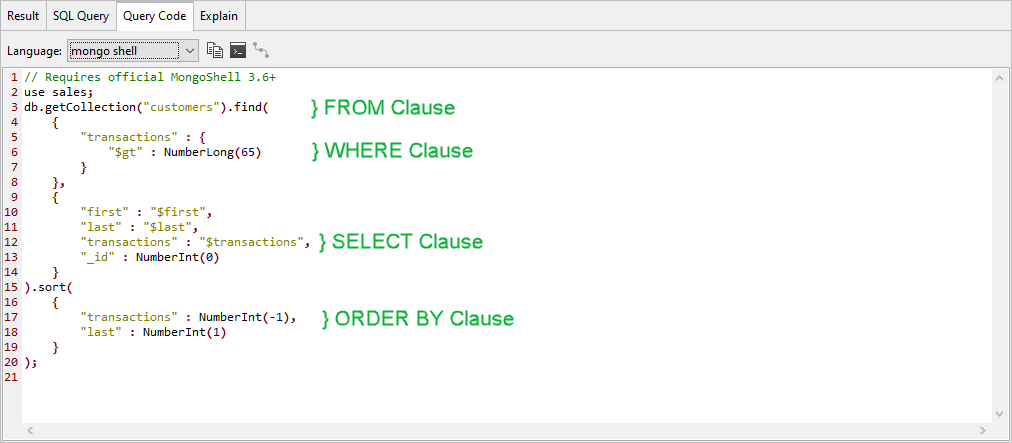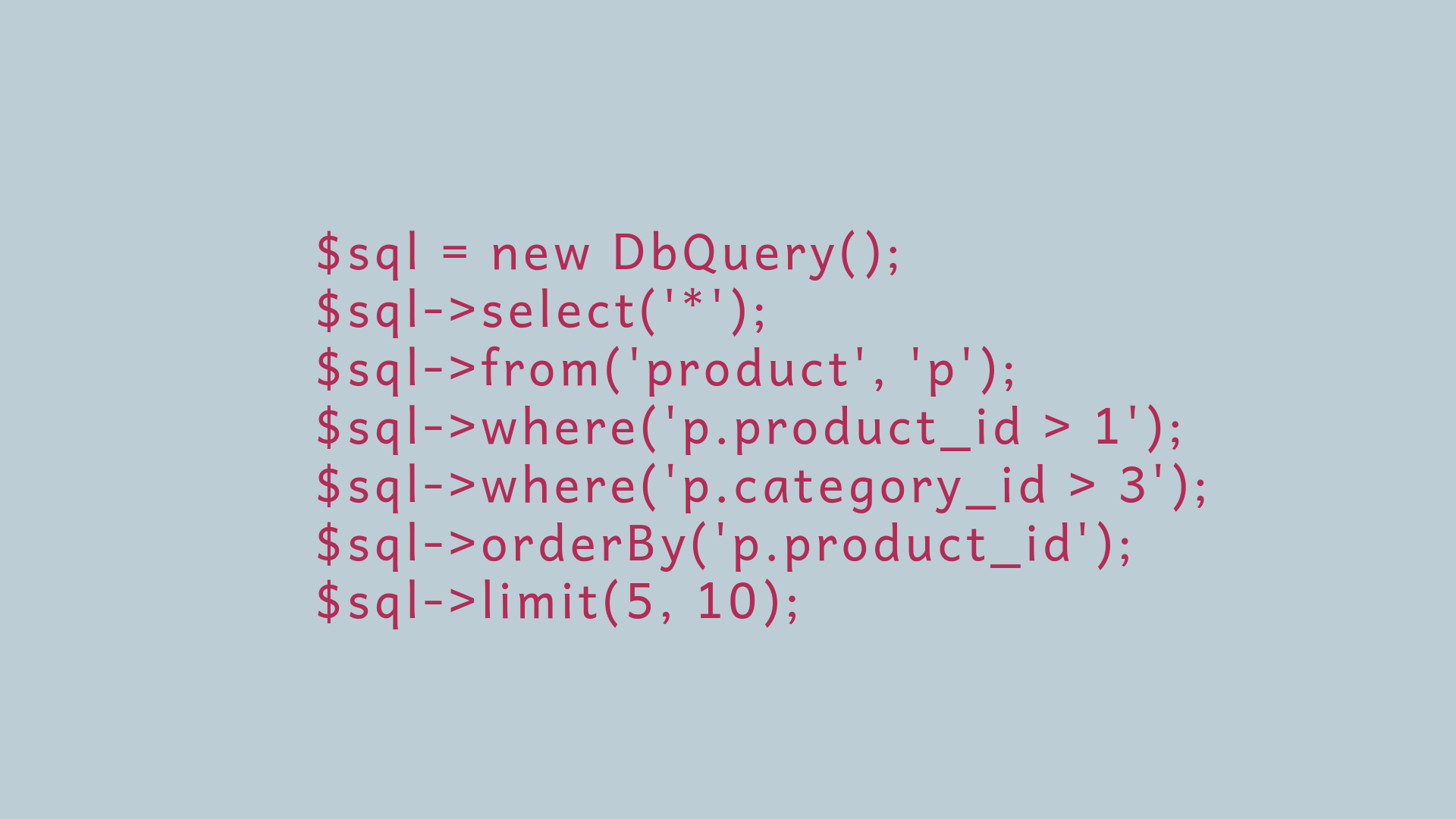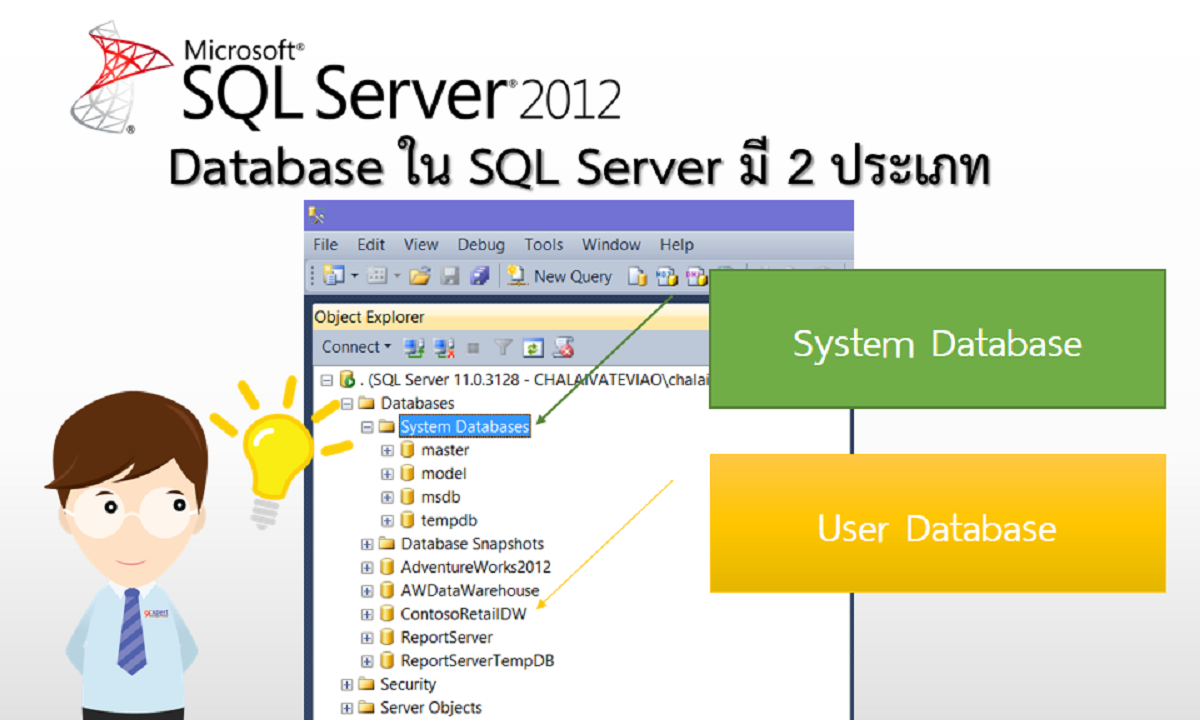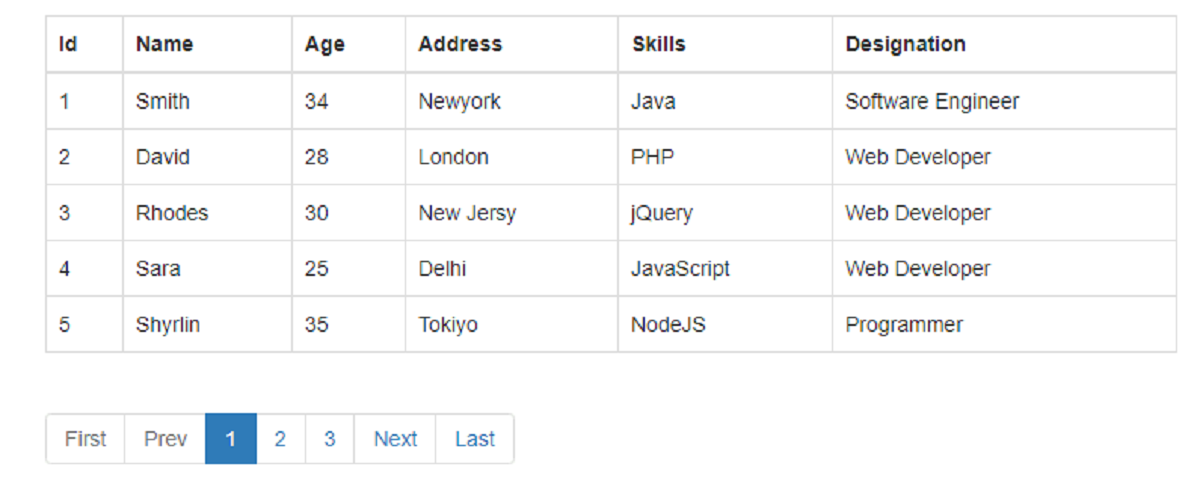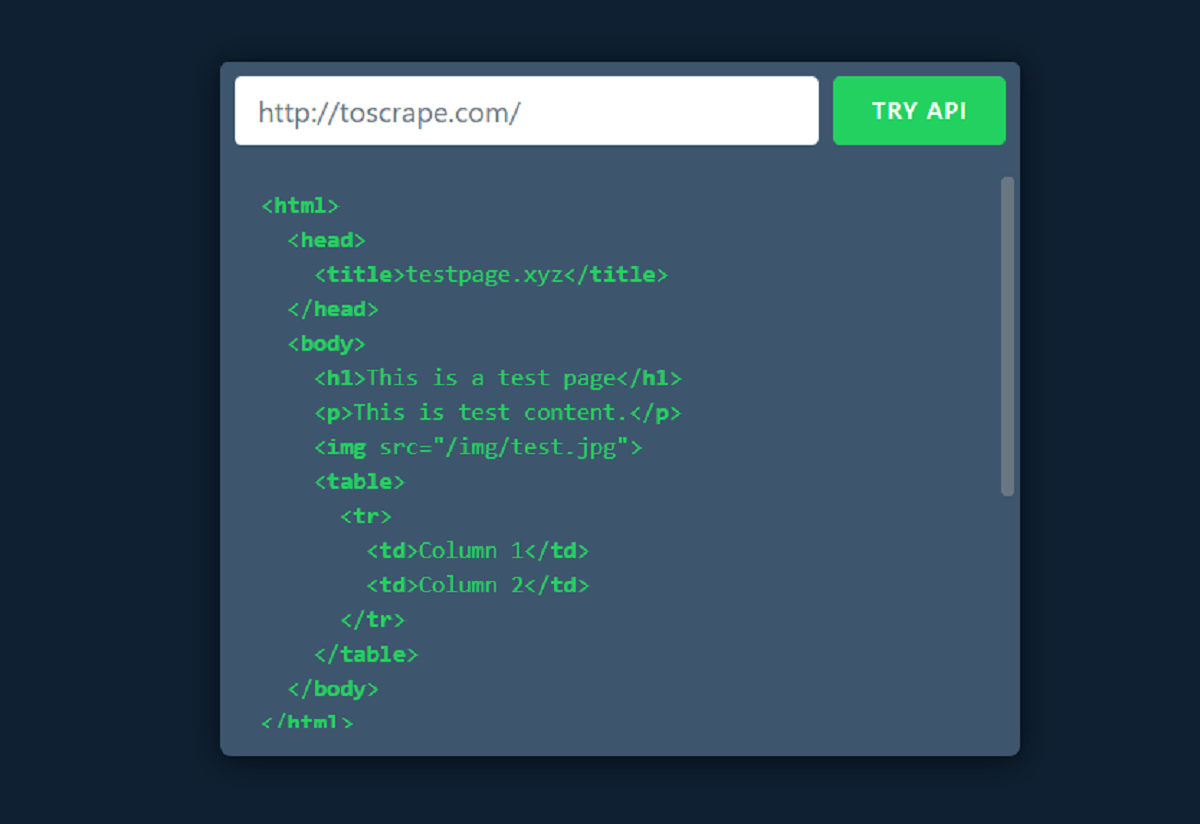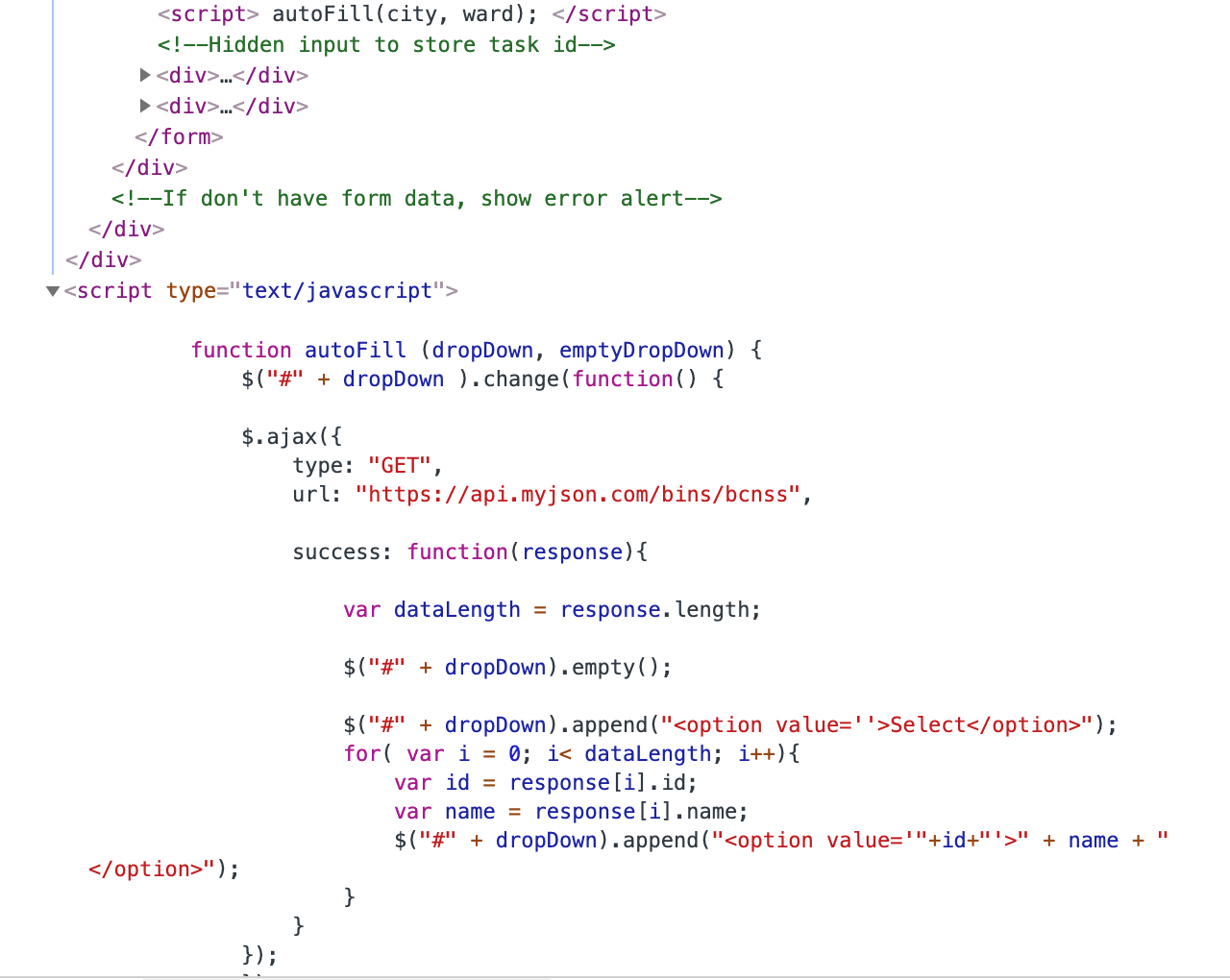Introduction
Welcome to the world of MongoDB! If you’re familiar with PHP and looking for a flexible and scalable NoSQL database solution, MongoDB is definitely worth exploring. In this article, we will delve into the topic of the “Where Clause” in PHP MongoDB, uncovering its syntax and various operators that can be utilized to query and filter data. Understanding how to use the Where Clause effectively will enable you to retrieve specific documents from a MongoDB collection that meet certain criteria.
When working with MongoDB, it’s important to have a driver that can connect PHP with the MongoDB server. The PHP MongoDB extension, or driver, provides a powerful set of functions and tools for interacting with MongoDB databases. This extension allows PHP developers to leverage the full potential of MongoDB’s document-oriented approach and take advantage of its robust querying capabilities.
Now, let’s dive into the concept of the Where Clause. In databases, a Where Clause is a condition that is applied to a query to filter data based on specific criteria. In PHP MongoDB, the Where Clause allows you to specify conditions that documents must meet in order to be included in the query result. This gives you the flexibility to retrieve only the data that meets your requirements, saving you time and resources.
Throughout this article, we will explore the syntax of the Where Clause in PHP MongoDB and discuss the various operators that can be used to create powerful and precise queries. By understanding how to effectively use these operators, you’ll be able to manipulate and retrieve data from your MongoDB collections with ease.
What is MongoDB?
MongoDB is a popular and widely-used NoSQL database management system that falls under the category of document-oriented databases. It is designed to handle large volumes of data and provide high performance and scalability for modern applications.
Unlike traditional relational databases, which store data in tables with fixed schemas, MongoDB stores data in flexible and self-describing JSON-like documents called BSON (Binary JSON). This document-based approach allows for dynamic and schema-less data modeling, making it perfect for scenarios where data structures can evolve over time.
One of the key features of MongoDB is its ability to scale horizontally across multiple servers, enabling you to handle increasing amounts of data and traffic without sacrificing performance. MongoDB achieves this scalability through its support for sharding, which is the process of distributing data across multiple machines or replicas. By utilizing sharding, MongoDB can handle large datasets with ease and maintain high availability.
MongoDB also offers powerful querying capabilities, allowing you to perform complex operations on your data. With its flexible document model, you can query and retrieve data using a rich set of operators and functions. Furthermore, MongoDB has built-in support for geospatial indexing, text search, and aggregation, providing you with a comprehensive toolkit for manipulating and analyzing your data.
Another notable aspect of MongoDB is its ease of use and developer-friendly features. The MongoDB query language, called the MongoDB Query Language (MQL), is simple and intuitive, making it quick to learn and use. Additionally, MongoDB integrates seamlessly with popular programming languages like PHP, Python, and Node.js, allowing developers to work with their preferred tools and libraries.
In summary, MongoDB is a flexible, scalable, and high-performance NoSQL database that offers a document-oriented approach for storing and manipulating data. It is well-suited for modern, data-intensive applications that need to handle large amounts of information while ensuring optimal performance and flexibility in data modeling.
What is PHP MongoDB Driver?
The PHP MongoDB driver is an extension that allows PHP developers to interact with MongoDB databases seamlessly. It serves as a bridge between PHP and MongoDB, providing a set of functions and tools to perform various database operations.
Developed and maintained by the MongoDB team, the PHP MongoDB driver is designed to be fast, efficient, and reliable. It fully utilizes the MongoDB driver API, allowing developers to take advantage of MongoDB’s powerful features and functionality.
The PHP MongoDB driver supports both the MongoDB driver version 1.x and the newer MongoDB extension version 2.x, offering compatibility and flexibility for developers depending on their specific requirements.
With the PHP MongoDB driver, developers can establish connections to MongoDB servers, select databases, and perform CRUD operations (Create, Read, Update, Delete) on collections and documents. It provides a wide range of methods and functions to facilitate these operations, making it easy to integrate MongoDB into PHP applications.
Furthermore, the PHP MongoDB driver supports various advanced features of MongoDB, including aggregations, map-reduce, gridFS (for storing large files), geospatial indexing, and more. This allows developers to leverage the full potential of MongoDB’s capabilities within their PHP applications.
The PHP MongoDB driver also provides options for managing database connections, including connection pooling and replica set failover. This ensures optimal performance, reliability, and high availability when interacting with MongoDB.
In addition to the core functionalities, the PHP MongoDB driver offers a rich set of utility classes and wrappers for advanced data manipulation and querying. These classes provide convenient methods for executing complex queries, working with MongoDB indexes, and handling BSON data (MongoDB’s binary JSON representation).
Overall, the PHP MongoDB driver simplifies the process of working with MongoDB in PHP applications. Its feature-rich API, compatibility with different MongoDB versions, and performance optimizations make it an essential tool for developers who want to harness the power of MongoDB’s document-oriented approach in their PHP projects.
What is a Where Clause?
In the context of databases, a Where Clause is a crucial component of a query that is used to filter and retrieve specific data based on certain conditions. It allows you to specify criteria that must be met by the data in order for it to be included in the query result.
When it comes to PHP MongoDB, the Where Clause plays a vital role in querying MongoDB collections to retrieve documents that satisfy specific conditions. It allows you to narrow down your search and retrieve data that matches the criteria you specify.
The Where Clause in PHP MongoDB consists of a set of operators that enable you to define conditions for data retrieval. These operators range from simple comparison operators, such as equals ($eq) and not equals ($ne), to more advanced operators like logical operators ($and, $or) and array operators ($in, $all).
By utilizing the Where Clause, you can construct complex queries to filter data based on various factors, such as specific field values, ranges of values, existence of certain fields, and more. This empowers you to efficiently retrieve the data you need, reducing the amount of unnecessary data processing and improving the overall performance of your application.
Moreover, the Where Clause in PHP MongoDB allows you to combine multiple conditions using logical operators. This enables you to create compound queries that involve multiple fields and conditions, giving you even more flexibility in defining your search criteria.
Understanding how to effectively use the Where Clause and its operators is crucial for efficient data retrieval and manipulation in PHP MongoDB. By leveraging this powerful feature, you can enhance the functionality and performance of your applications by precisely targeting the data that meets your specific requirements.
Syntax of Where Clause in PHP MongoDB
When working with PHP MongoDB, the Where Clause is an essential part of constructing queries to filter and retrieve data from MongoDB collections. The syntax of the Where Clause allows you to specify the conditions that documents must meet in order to be included in the query result.
The basic syntax of the Where Clause in PHP MongoDB is as follows:
{ field: { operator: value } }
In this syntax, “field” represents the field in the document that you want to apply the condition to. The “operator” indicates the specific comparison or logical operation you want to perform, and “value” represents the value you are comparing against.
You can also combine multiple conditions using logical operators within the Where Clause. For example:
{
$and: [
{ field1: { operator: value1 } },
{ field2: { operator: value2 } }
]
}
In this example, the $and operator is used to combine two conditions, specified by field1 and field2 respectively. This means that both conditions must be true for a document to be included in the query result.
There is a wide range of operators available within the PHP MongoDB Where Clause to suit different querying needs. These operators include basic comparison operators ($eq, $ne, $gt, $lt, $gte, $lte), logical operators ($and, $or, $not, $nor), array operators ($in, $nin, $all, $size), and more.
To further enhance the flexibility and readability of your queries, you can also use regular expressions, null checks, and other advanced features within the Where Clause.
By mastering the syntax of the Where Clause in PHP MongoDB and understanding the available operators, you will have the ability to construct powerful and precise queries to retrieve specific data from your MongoDB collections.
Basic Comparison Operators
When constructing queries in PHP MongoDB, basic comparison operators play a crucial role in filtering and retrieving data from MongoDB collections. These operators allow you to compare a field’s value against a specified value and include or exclude documents based on the result of the comparison.
Here are some commonly used basic comparison operators:
- $eq: Matches values that are equal. Example: { field: { $eq: value } }
- $ne: Matches values that are not equal. Example: { field: { $ne: value } }
- $gt: Matches values that are greater than a specified value. Example: { field: { $gt: value } }
- $lt: Matches values that are less than a specified value. Example: { field: { $lt: value } }
- $gte: Matches values that are greater than or equal to a specified value. Example: { field: { $gte: value } }
- $lte: Matches values that are less than or equal to a specified value. Example: { field: { $lte: value } }
These operators can be used in the Where Clause of a query to define specific conditions for data retrieval based on the comparison result. For example, you can use the $eq operator to fetch documents where a particular field matches a specific value, or the $ne operator to exclude documents that have a certain value for a field.
By utilizing these basic comparison operators, you can perform targeted searches and retrieve data that fits your criteria. This flexibility allows you to narrow down your query results to only the relevant documents, improving the efficiency and accuracy of your data retrieval process in PHP MongoDB.
Example 1: Using the $eq Operator
The $eq operator is a basic comparison operator in PHP MongoDB that matches values that are equal to a specified value. Let’s explore an example to understand how to use this operator effectively in querying MongoDB collections.
Suppose we have a collection called “users” that stores user data, and within this collection, there is a field called “name”. We want to retrieve all documents where the name is exactly “John”. We can use the $eq operator to accomplish this:
db.users.find({ name: { $eq: "John" } })
This query will fetch all documents from the “users” collection where the name field is equal to “John”. The $eq operator ensures that only exact matches are returned.
By using the $eq operator, you can perform precise searches and retrieve data that meets your specific requirements. Whether you need to find users with a specific name, products with a certain price, or any other field comparison, the $eq operator allows you to filter data efficiently in PHP MongoDB.
In summary, the $eq operator in PHP MongoDB enables you to match document field values that are equal to a specified value. It is a useful tool for performing precise queries that require exact matches, allowing you to retrieve the data you need with accuracy and efficiency.
Example 2: Using the $ne Operator
The $ne operator is another basic comparison operator in PHP MongoDB that matches values that are not equal to a specified value. Let’s explore an example to understand how to use this operator effectively in querying MongoDB collections.
Suppose we have a collection called “products” that stores product data, and within this collection, there is a field called “category”. We want to retrieve all documents where the category is not equal to “Electronics”. We can use the $ne operator to accomplish this:
db.products.find({ category: { $ne: "Electronics" } })
This query will fetch all documents from the “products” collection where the category field is not equal to “Electronics”. The $ne operator ensures that only documents with different values are returned.
By using the $ne operator, you can exclude specific values or categories from your query results. This allows for greater flexibility when searching for data that does not meet certain criteria in PHP MongoDB.
For example, if you want to retrieve all products except those that fall into a specific category, the $ne operator makes it easy to achieve that. It allows you to filter out unwanted data and focus only on the documents that meet your specific requirements.
In summary, the $ne operator in PHP MongoDB allows you to match document field values that are not equal to a specified value. It is a powerful tool for excluding specific values or categories from your query results, enabling you to fine-tune your data retrieval process with precision.
Example 3: Using the $gt Operator
The $gt operator is a basic comparison operator in PHP MongoDB that matches values that are greater than a specified value. Let’s explore an example to understand how to use this operator effectively in querying MongoDB collections.
Suppose we have a collection called “products” that stores product data, and within this collection, there is a field called “price”. We want to retrieve all documents where the price is greater than $100. We can use the $gt operator to accomplish this:
db.products.find({ price: { $gt: 100 } })This query will fetch all documents from the “products” collection where the price field is greater than $100. The $gt operator ensures that only documents with prices above the specified value are returned.
By using the $gt operator, you can perform range-based searches and retrieve data that meets specific criteria related to numerical or date values. In this example, we retrieved products with prices greater than $100, but you can adapt the same concept to other scenarios, such as retrieving orders with quantities greater than a certain threshold or users with registration dates after a specified date.
The $gt operator allows you to filter data based on an upper threshold, excluding values that are less than or equal to the specified threshold. This gives you the ability to narrow down your query results to only the documents that meet the specific criteria you define in PHP MongoDB.
In summary, the $gt operator in PHP MongoDB enables you to match document field values that are greater than a specified value. It is a powerful tool for performing range-based searches, allowing you to filter data and retrieve only the documents that fall within your desired range.
Example 4: Using the $lt Operator
The $lt operator is a basic comparison operator in PHP MongoDB that matches values that are less than a specified value. Let’s explore an example to understand how to use this operator effectively in querying MongoDB collections.
Suppose we have a collection called “products” that stores product data, and within this collection, there is a field called “price”. We want to retrieve all documents where the price is less than $50. We can use the $lt operator to accomplish this:
db.products.find({ price: { $lt: 50 } })This query will fetch all documents from the “products” collection where the price field is less than $50. The $lt operator ensures that only documents with prices below the specified value are returned.
Using the $lt operator allows you to perform range-based searches and retrieve data that falls within a specific numerical or date range. In this example, we retrieved products with prices less than $50, but you can adapt this concept to other scenarios, such as retrieving orders with quantities lower than a certain threshold or users with registration dates before a specific date.
The $lt operator enables you to filter data based on a lower threshold, excluding values that are greater than or equal to the specified threshold. This allows you to pinpoint the documents that meet your specific criteria in PHP MongoDB.
In summary, the $lt operator in PHP MongoDB allows you to match document field values that are less than a specified value. It is a powerful tool for performing range-based searches, enabling you to retrieve data that falls within a specific numerical or date range based on your desired criteria.
Example 5: Using the $gte Operator
The $gte operator is a basic comparison operator in PHP MongoDB that matches values that are greater than or equal to a specified value. Let’s explore an example to understand how to use this operator effectively in querying MongoDB collections.
Suppose we have a collection called “products” that stores product data, and within this collection, there is a field called “quantity”. We want to retrieve all documents where the quantity is greater than or equal to 10. We can use the $gte operator to accomplish this:
db.products.find({ quantity: { $gte: 10 } })This query will fetch all documents from the “products” collection where the quantity field is greater than or equal to 10. The $gte operator ensures that only documents with quantities equal to or above the specified value are returned.
By utilizing the $gte operator, you can perform searches that include the specified value and any values greater than it. In this example, we retrieved products with quantities greater than or equal to 10, but you can adapt this concept to other scenarios, such as retrieving orders with total prices greater than or equal to a specific amount or users with ages greater than or equal to a certain value.
The $gte operator allows you to filter data based on a lower threshold, including values that are equal to or greater than the specified threshold. This provides you with the flexibility to retrieve documents that meet your specific criteria in PHP MongoDB.
In summary, the $gte operator in PHP MongoDB allows you to match document field values that are greater than or equal to a specified value. It is a powerful tool for performing searches that include the specified value and any values greater than it, enabling you to retrieve data that falls within a specific range based on your desired criteria.
Example 6: Using the $lte Operator
The $lte operator is a basic comparison operator in PHP MongoDB that matches values that are less than or equal to a specified value. Let’s explore an example to understand how to use this operator effectively in querying MongoDB collections.
Suppose we have a collection called “products” that stores product data, and within this collection, there is a field called “quantity”. We want to retrieve all documents where the quantity is less than or equal to 50. We can use the $lte operator to accomplish this:
db.products.find({ quantity: { $lte: 50 } })This query will fetch all documents from the “products” collection where the quantity field is less than or equal to 50. The $lte operator ensures that only documents with quantities equal to or below the specified value are returned.
By utilizing the $lte operator, you can perform searches that include the specified value and any values less than it. In this example, we retrieved products with quantities less than or equal to 50, but you can adapt this concept to other scenarios, such as retrieving orders with total prices less than or equal to a specific amount or users with ages less than or equal to a certain value.
The $lte operator allows you to filter data based on an upper threshold, including values that are equal to or less than the specified threshold. This gives you the flexibility to retrieve documents that meet your specific criteria in PHP MongoDB.
In summary, the $lte operator in PHP MongoDB allows you to match document field values that are less than or equal to a specified value. It is a powerful tool for performing searches that include the specified value and any values less than it, enabling you to retrieve data that falls within a specific range based on your desired criteria.
Example 7: Using the $in Operator
The $in operator is a powerful and versatile operator in PHP MongoDB that matches documents where a field’s value matches any of the values specified in an array. Let’s explore an example to understand how to use this operator effectively in querying MongoDB collections.
Suppose we have a collection called “products” that stores product data, and within this collection, there is a field called “category”. We want to retrieve all documents where the category is either “Electronics”, “Clothing”, or “Books”. We can use the $in operator to accomplish this:
db.products.find({ category: { $in: ["Electronics", "Clothing", "Books"] } })This query will fetch all documents from the “products” collection where the category field matches any of the values specified in the array: “Electronics”, “Clothing”, or “Books”. The $in operator ensures that only documents with matching categories are returned.
By using the $in operator, you can match documents against multiple values without the need for separate queries. This is particularly useful when you want to retrieve data that falls within a specific set of options or categories.
For example, if you have a dropdown menu for product categories on a website and want to retrieve products that fall within the selected categories, the $in operator allows you to fetch the data in a single query without the need for multiple conditions.
In summary, the $in operator in PHP MongoDB allows you to match document field values against multiple options specified in an array. It is a flexible and efficient tool for querying MongoDB collections based on a set of preferred values, enabling you to retrieve data that falls within a specified set of options or categories.
Example 8: Using the $nin Operator
The $nin operator is a powerful operator in PHP MongoDB that matches documents where a field’s value does not match any of the values specified in an array. Let’s explore an example to understand how to use this operator effectively in querying MongoDB collections.
Suppose we have a collection called “products” that stores product data, and within this collection, there is a field called “category”. We want to retrieve all documents where the category is not “Electronics”, “Clothing”, or “Books”. We can use the $nin operator to accomplish this:
db.products.find({ category: { $nin: ["Electronics", "Clothing", "Books"] } })This query will fetch all documents from the “products” collection where the category field does not match any of the values specified in the array: “Electronics”, “Clothing”, or “Books”. The $nin operator ensures that only documents with categories that are not included in the array are returned.
By using the $nin operator, you can exclude specific values or categories from your query results. This is useful when you want to retrieve data that does not fall within a specific set of options or categories.
For example, if you have a collection of products and want to exclude certain categories, such as “Electronics”, “Clothing”, or “Books”, from your query results, the $nin operator allows you to do so in a single query without having to specify multiple conditions.
In summary, the $nin operator in PHP MongoDB allows you to match document field values that do not match any of the values specified in an array. It is a powerful tool for excluding specific values or categories from your query results, enabling you to retrieve the data that falls outside of a specified set of options or categories.
Logical Operators
In PHP MongoDB, logical operators provide the ability to combine multiple conditions in a query to create more complex and sophisticated filters. These operators allow you to specify logical relationships between conditions and retrieve documents that satisfy a combination of criteria.
Here are the commonly used logical operators in PHP MongoDB:
- $and: Matches documents that satisfy all the specified conditions within the array. Example: { $and: [ { condition1 }, { condition2 }, … ] }
- $or: Matches documents that satisfy at least one of the specified conditions within the array. Example: { $or: [ { condition1 }, { condition2 }, … ] }
- $not: Matches documents that do not satisfy the specified condition. Example: { field: { $not: { condition } } }
- $nor: Matches documents that fail to satisfy all the specified conditions within the array. Example: { $nor: [ { condition1 }, { condition2 }, … ] }
Logical operators allow you to combine conditions in powerful ways. For example, you can use the $and operator to retrieve documents that satisfy both condition1 and condition2 simultaneously. Conversely, the $or operator allows you to retrieve documents that satisfy either condition1 or condition2, giving you more flexibility in filtering results.
The $not operator allows you to negate a condition, enabling you to retrieve documents that do not match a specific condition. On the other hand, the $nor operator provides the ability to retrieve documents that fail to satisfy all the specified conditions within the array.
By utilizing logical operators, you can construct complex queries with multiple conditions and fine-tune your data retrieval in PHP MongoDB. These operators provide a powerful toolset for designing advanced filters and retrieving documents that meet your specific criteria.
Example 9: Using the $and Operator
The $and operator in PHP MongoDB allows you to combine multiple conditions with an “AND” logical relationship. It matches documents that satisfy all the specified conditions within the array. Let’s explore an example to understand how to use this operator effectively in querying MongoDB collections.
Suppose we have a collection called “users” that stores user data, and within this collection, there are fields for “age” and “gender”. We want to retrieve all documents where the age is greater than 25 and the gender is “male”. We can use the $and operator to accomplish this:
db.users.find({ $and: [ { age: { $gt: 25 } }, { gender: "male" } ] })This query will fetch all documents from the “users” collection that satisfy both conditions: the age field must be greater than 25, and the gender field must be “male”. The $and operator ensures that only documents that meet both conditions are returned.
By using the $and operator, you can combine multiple conditions within a query and retrieve documents that satisfy all the specified criteria. This allows you to create more precise filters and narrow down your search results to fit your specific requirements in PHP MongoDB.
For example, you can use the $and operator to retrieve users who are both above a certain age and belong to a specific gender, or to find products that meet multiple criteria, such as a specific category and price range.
By leveraging the $and operator, you can construct more complex queries that involve multiple conditions and ensure that only documents meeting all the specified criteria are included in the result set.
In summary, the $and operator in PHP MongoDB allows you to combine multiple conditions with an “AND” relationship, ensuring that all the specified conditions are satisfied. It is a powerful tool for creating precise filters and retrieving documents that meet multiple criteria in PHP MongoDB.
Example 10: Using the $or Operator
The $or operator in PHP MongoDB allows you to specify multiple conditions with an “OR” logical relationship. It matches documents that satisfy at least one of the specified conditions within the array. Let’s explore an example to understand how to use this operator effectively in querying MongoDB collections.
Suppose we have a collection called “products” that stores product data, and within this collection, there are fields for “category” and “price”. We want to retrieve all documents where either the category is “Electronics” or the price is greater than $500. We can use the $or operator to accomplish this:
db.products.find({ $or: [ { category: "Electronics" }, { price: { $gt: 500 } } ] })This query will fetch all documents from the “products” collection that satisfy at least one of the specified conditions: either the category is “Electronics” or the price is greater than $500. The $or operator ensures that only documents that fulfill at least one of these conditions are returned.
By using the $or operator, you can create more flexible filters and retrieve documents that meet any of the specified criteria. This allows you to broaden your search results and include documents that satisfy any of the conditions you specify in PHP MongoDB.
For example, you can use the $or operator to retrieve products based on multiple criteria, such as a specific category or a price range. It enables you to construct queries that encompass various possibilities and retrieve the relevant documents accordingly.
By leveraging the $or operator, you can create queries with multiple conditions and retrieve documents that satisfy at least one of the specified criteria, broadening your search results and covering diverse possibilities.
In summary, the $or operator in PHP MongoDB allows you to specify multiple conditions with an “OR” relationship, retrieving documents that satisfy at least one of the specified conditions. It is a powerful tool for creating flexible filters and expanding your search results based on various criteria in PHP MongoDB.
Example 11: Using the $not Operator
The $not operator in PHP MongoDB allows you to negate a condition and match documents that do not satisfy the specified condition. Let’s explore an example to understand how to use this operator effectively in querying MongoDB collections.
Suppose we have a collection called “users” that stores user data, and within this collection, there is a field called “age”. We want to retrieve all documents where the age is not equal to 30. We can use the $not operator to accomplish this:
db.users.find({ age: { $not: { $eq: 30 } } })This query will fetch all documents from the “users” collection where the age field is not equal to 30. The $not operator negates the condition specified by the $eq operator, ensuring that only documents with ages other than 30 are returned.
By using the $not operator, you can filter out documents that do not meet a specific condition. This allows you to exclude data that does not meet your criteria, providing greater control over the retrieval process in PHP MongoDB.
For example, you can use the $not operator to retrieve users who are not of a certain age, or to find products that do not belong to a particular category.
By leveraging the $not operator, you can create queries that exclude documents based on a specified condition, providing more nuanced and refined data retrieval in PHP MongoDB.
In summary, the $not operator in PHP MongoDB allows you to negate a condition and match documents that do not satisfy the specified condition. It is a powerful tool for excluding data that does not meet a specific criterion, giving you more control over the retrieval process in PHP MongoDB.
Example 12: Using the $nor Operator
The $nor operator in PHP MongoDB allows you to specify multiple conditions with a negation (“NOR”) logical relationship. It matches documents that fail to satisfy any of the specified conditions within the array. Let’s explore an example to understand how to use this operator effectively in querying MongoDB collections.
Suppose we have a collection called “products” that stores product data, and within this collection, there are fields for “category” and “price”. We want to retrieve all documents where neither the category is “Electronics” nor the price is greater than $500. We can use the $nor operator to accomplish this:
db.products.find({ $nor: [ { category: "Electronics" }, { price: { $gt: 500 } } ] })This query will fetch all documents from the “products” collection that fail to satisfy any of the specified conditions: neither the category is “Electronics” nor the price is greater than $500. The $nor operator ensures that only documents that do not fulfill any of these conditions are returned.
By using the $nor operator, you can create complex filters and retrieve documents that fail to meet any of the specified criteria. This allows you to exclude certain combinations of conditions and retrieve the relevant documents accordingly.
For example, you can use the $nor operator to retrieve products that do not fall into specific categories or do not exceed a particular price threshold. It enables you to construct queries that exclude various possibilities and retrieve the relevant documents accordingly.
By leveraging the $nor operator, you can create queries with multiple negated conditions and retrieve documents that fail to satisfy any of the specified criteria, narrowing down your search results based on specific exclusions.
In summary, the $nor operator in PHP MongoDB allows you to specify multiple conditions with a negation (“NOR”) relationship, retrieving documents that fail to satisfy any of the specified conditions. It is a powerful tool for creating complex filters and excluding documents that fall into specific combinations of conditions in PHP MongoDB.
Array Operators
In PHP MongoDB, array operators provide powerful functionality when working with array fields. These operators allow you to query and manipulate arrays within documents. Let’s explore the array operators available in PHP MongoDB:
- $all: Matches documents that contain all the specified values in an array field.
- $size: Matches documents where the size of an array field matches the specified value.
- $exists: Matches documents that contain a specific field.
Array operators provide flexible options for querying and manipulating array fields in PHP MongoDB collections. You can utilize these operators to create more complex and precise queries based on the structure and contents of array fields.
The $all operator allows you to find documents that contain all the specified values in an array field. This enables you to query for documents that meet specific combinations of values in arrays, providing powerful search capabilities.
The $size operator allows you to match documents where the size of an array field matches the specified value. This is useful in scenarios where you want to find documents with arrays that contain a specific number of elements, allowing for more granular filtering.
The $exists operator enables you to match documents that contain a specific field, regardless of the value of that field. This is useful when you want to find documents that have a particular field present in order to perform further processing or filtering.
By effectively utilizing array operators, you can query and manipulate array fields within PHP MongoDB collections, allowing for more sophisticated and targeted data retrieval and manipulation.
Example 13: Using the $all Operator
The $all operator in PHP MongoDB allows you to match documents that contain all the specified values in an array field. Let’s explore an example to understand how to use this operator effectively in querying MongoDB collections.
Suppose we have a collection called “products” that stores product data, and within this collection, there is a field called “tags”. We want to retrieve all documents that contain the tags [“electronics”, “gaming”]. We can use the $all operator to accomplish this:
db.products.find({ tags: { $all: ["electronics", "gaming"] } })This query will fetch all documents from the “products” collection where the tags field contains both “electronics” and “gaming”. The $all operator ensures that only documents that have both tags present are returned.
By using the $all operator, you can perform advanced searches that require documents to match multiple values within an array field. This is particularly useful when dealing with tags, categories, or any other form of classification within your MongoDB data.
For example, if you have an e-commerce platform and want to find products that have both the “electronics” and “gaming” tags, the $all operator allows you to precisely retrieve the desired products in a single query.
In summary, the $all operator in PHP MongoDB allows you to match documents that contain all the specified values within an array field. It is a powerful tool for performing complex searches based on combinations of values in array fields, providing flexibility and precision in your data retrieval process.
Example 14: Using the $size Operator
The $size operator in PHP MongoDB allows you to match documents where the size of an array field matches the specified value. Let’s explore an example to understand how to use this operator effectively in querying MongoDB collections.
Suppose we have a collection called “products” that stores product data, and within this collection, there is a field called “colors”. We want to retrieve all documents that have exactly three colors. We can use the $size operator to accomplish this:
db.products.find({ colors: { $size: 3 } })This query will fetch all documents from the “products” collection where the colors field contains exactly three elements. The $size operator ensures that only documents with an array size of three are returned.
By using the $size operator, you can perform queries based on the specific size of an array field. This is useful when you want to retrieve documents that have a certain number of elements in an array, enabling precise filtering based on array length.
For example, if you have a collection of products and want to find products with a specific number of images in their image gallery, the $size operator allows you to retrieve those products with ease.
In summary, the $size operator in PHP MongoDB allows you to match documents where the size of an array field matches the specified value. It is a powerful tool for querying MongoDB collections based on the number of elements in an array, enabling precise filtering and retrieval of documents that meet specific array length criteria.
Example 15: Using the $exists Operator
The $exists operator in PHP MongoDB allows you to match documents that contain a specific field, regardless of the value of that field. Let’s explore an example to understand how to use this operator effectively in querying MongoDB collections.
Suppose we have a collection called “users” that stores user data, and within this collection, there is a field called “email”. We want to retrieve all documents that have an email field present. We can use the $exists operator to accomplish this:
db.users.find({ email: { $exists: true } })This query will fetch all documents from the “users” collection that have an email field present. The $exists operator ensures that only documents with the email field are returned, regardless of the value of that field.
By using the $exists operator, you can perform searches based on the existence of a specific field within documents. This is useful when you want to retrieve documents that have a particular field present, regardless of what value it holds.
For example, if you have a user management system and want to retrieve all users who have provided their email address during registration, the $exists operator allows you to easily find those users.
In summary, the $exists operator in PHP MongoDB allows you to match documents that contain a specific field, irrespective of the value of that field. It is a powerful tool for querying MongoDB collections based on the presence or absence of specific fields, providing flexibility in data retrieval based on field existence.
Conclusion
In this article, we have explored the concept of the Where Clause in PHP MongoDB and learned how it plays a crucial role in filtering and retrieving data from MongoDB collections. We discussed various operators that can be used within the Where Clause to define conditions and create powerful queries.
By understanding the syntax and functionality of the Where Clause, you can construct precise and efficient queries to fetch specific data from your MongoDB collections. Whether it’s using basic comparison operators like $eq, $ne, $gt, $lt, $gte, and $lte to perform value-based comparisons, or leveraging logical operators like $and, $or, $not, and $nor to combine conditions with logical relationships, you now have the tools to retrieve data with precision.
We also explored array operators like $all, $size, and $exists, which allow for more advanced querying and manipulation of array fields within MongoDB collections. These operators empower you to perform complex searches and retrieve documents based on specific array conditions or the existence of certain fields.
With the knowledge and understanding gained from this article, you can now employ the power and flexibility of the Where Clause and its operators to better harness the capabilities of PHP MongoDB. Whether you’re building e-commerce platforms, content management systems, or any other application that requires efficient data retrieval, MongoDB and the Where Clause provide the tools you need to optimize your database queries and enhance the performance of your application.
So go ahead, experiment with the different operators, combine them as needed, and dive deeper into the capabilities of PHP MongoDB. The power to query, filter, and retrieve data precisely from your MongoDB collections is now in your hands!







